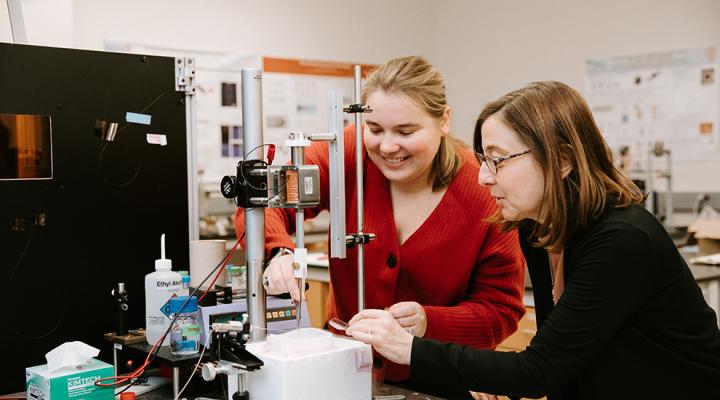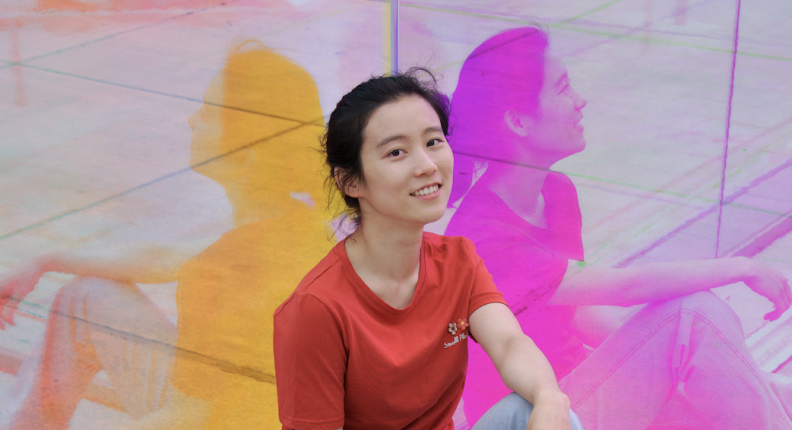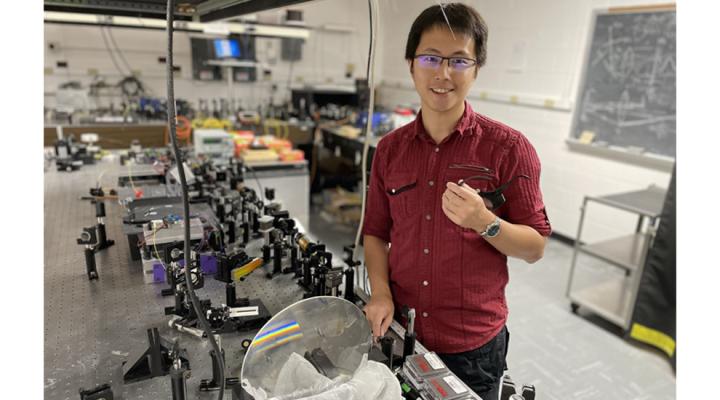When Zui Tao was in elementary school in Hefei, China she was obsessed with magic. She practiced tricks every day and performed a magic show each year at her school’s New Year Festival. But that all changed on the first day of her middle school physics class. “The teacher presented a series of physics demonstrations to us,” says Tao, “but for me, it was a magic show. All of the sudden I understood that this is real magic. And I wanted to learn what was happening.”
Tao went to the University of Science and Technology of China (USTC) in her hometown and earned a degree in physics. While an undergrad, she spent one summer in California at UCLA, where she and two other undergrads were challenged to build an ion trap from scratch. “In the end, our trap didn’t work very well, but it was a great experience for me and helped me decide to continue on to grad school,” says Tao.
“Before I went to college I imagined I would finish my four years, get my degree, and go to work for a company. I didn’t think about going on to get a Ph.D. But then, as I learned more about physics, it became clear to me that I wanted to go deeper and learn more and do research. And the best way for me to do that was to go to grad school.”
Tao did some online research and talked to people at USTC and decided to apply to Cornell. She was impressed by both the quality of the research done at Cornell and by the pictures she saw of the beautiful surroundings. Once Tao arrived, the natural beauty was even greater than she was expecting. And, four years into her Ph.D. studies in the School of Applied and Engineering Physics (AEP), it is clear to Tao that the department’s reputation for high-quality research is well-deserved.
She joined the lab of AEP Professors Jie Shan and Kin Fai Mak, whose work focuses on the electronic properties of 2D quantum materials and their heterostructures. They have developed an array of experimental techniques to probe, image and control the internal degrees of freedom of electrons and many-body phases of matter in these systems. Tao has been involved in two main areas of the lab’s research: helping to implement a method for visualizing magnetic fluctuation in a two-dimensional material; and studying strong correlation effects in stacked 2D materials.
As Tao discusses her work in the lab, she grows animated and uses her hands to help demonstrate the violent fluctuation of magnetic moments in chromium tribromide and the creation of moiré patterns through the careful rotation of stacked sheets of particular materials. It is clear she is in the right field and gets excited by her work.
Tao explains that in certain stacked 2D materials, electrons can form a rigid lattice structure, a less-rigid flowing structure (analogous to liquids), or an even-less-rigid structure where the electrons are more analogous to a gas. The form taken varies with the angle the two layers are oriented in relation to each other. “We observed that when we stacked tungsten diselenide and tungsten disulfide with zero degrees of rotation that there can be a very strong interaction between the electrons,” says Tao. These strong interactions led to a visible stripe pattern in the resulting material. But when tuned differently, the pattern disappears.
This research is fundamental science without immediate applications, but Tao explains “These strong correlation effects are essentially related to high-temperature superconductivity, so, in general, people are very interested in this regime.” Tao herself would like to take her research further, even when her Ph.D. studies are complete.
“On some level research makes my life more meaningful,” says Tao. “When I don’t have the questions and challenges of research in my mind it feels like my brain is floating around without focus. Research grounds me. In a way, it reminds me of my childhood and being so focused on magic. But with an important difference. When you are doing magic, you are trying to trick your audience. But when doing research it’s like I am the audience and nature is trying to trick me--but I will be thrilled if I can reveal even a minute fraction of what nature is trying to hide. It is fascinating to me!”




